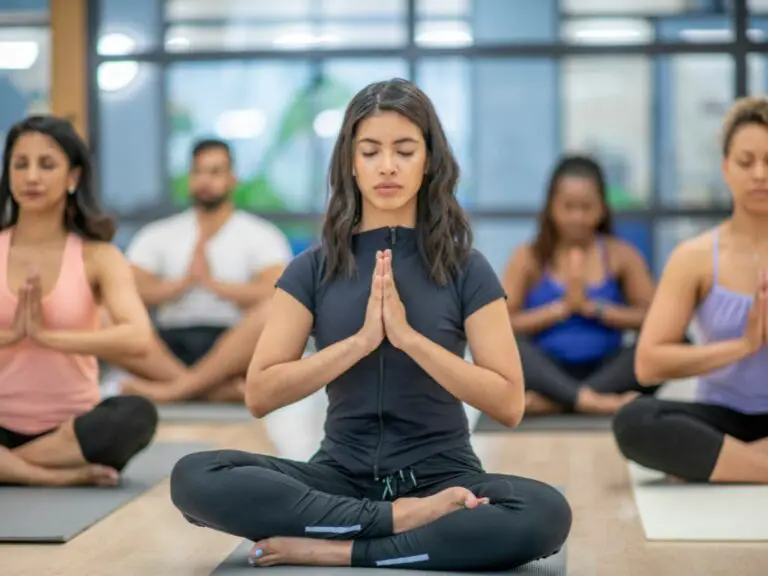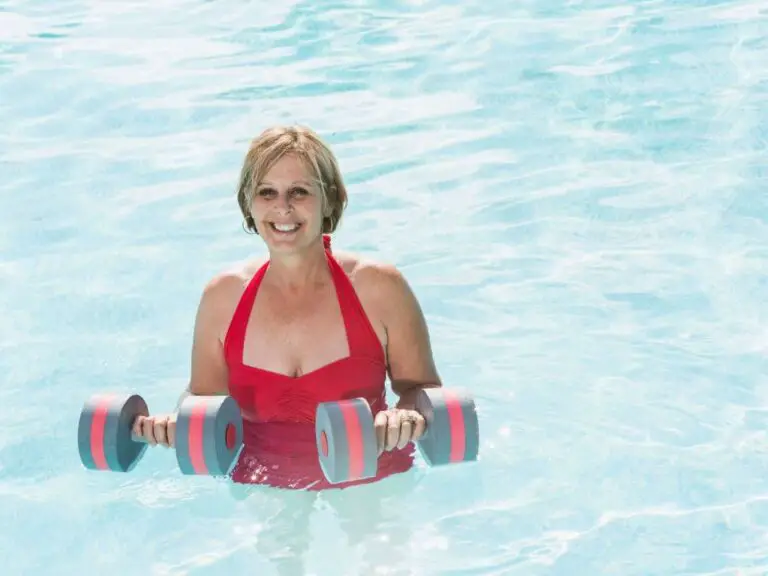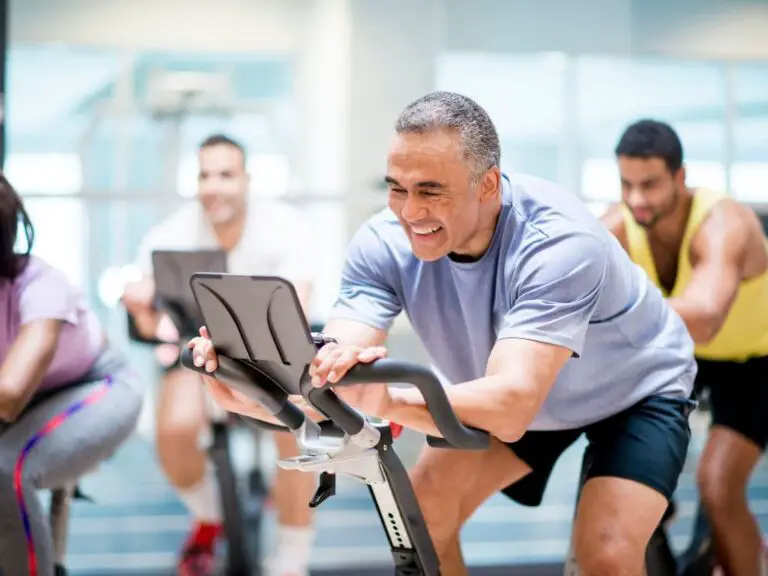Can You Get in Shape at 80?
Getting in shape and staying active is important at any age.
Can you be fit at 80? Yes, you can definitely be fit at 80. Regular physical activity, including weight-bearing exercises, balance training and aerobic activities, can help maintain strength, mobility, cognitive function, and overall well-being. However, it’s important to consult a doctor before starting a new fitness regimen, and any exercise program should be tailored to individual abilities and health conditions.
While aging does involve some physical decline, research shows that the majority of elderly people can still benefit enormously from exercise. Even into your 80s and beyond, it’s never too late to start an exercise routine and improve your overall health and fitness.

What Are the Benefits of Exercise for Older Adults?
Regular physical activity provides many health benefits that are critical for seniors. Some of the key benefits include:
- Maintaining strength and mobility: Weight-bearing and resistance exercises help maintain muscle mass, allowing seniors to stay strong and preserve mobility and balance. This aids in fall prevention.
- Supporting bone health: Exercise, along with adequate calcium and vitamin D intake, can help slow the bone loss associated with aging and reduce osteoporosis risk.
- Managing chronic conditions: Physical activity improves symptoms associated with arthritis, heart disease, type 2 diabetes, and other age-related diseases.
- Preserving cognitive function: Aerobic exercise and activities that challenge coordination and balance can help maintain memory, focus, and cognitive function.
- Promoting mental health: Exercise releases feel-good endorphins that can elevate mood and reduce anxiety and depression.
- Encouraging social interaction: Exercising in a group setting provides social engagement and support.
- Boosting overall well-being: Seniors who exercise frequently report higher levels of energy, stress relief, and an enhanced quality of life.
The key is tailoring exercise strategies to each individual’s needs and abilities. But research confirms that almost all seniors can engage in meaningful amounts of physical activity with proper guidance.
How Can You Start an Exercise Program at 80?
Can I get in shape at 80 if I’ve never exercised before? Yes, you can get in shape at 80 even if you’ve never exercised before. Regular, low-impact exercises such as walking, water workouts, and chair-based routines can build strength, balance, and endurance.
Consult a doctor before starting any new exercise program, start slowly, and gradually increase duration and intensity to maintain motivation and prevent injury.
Here are some tips for seniors starting a new exercise regimen at age 80:
- Consult your doctor first, especially if managing chronic illnesses. Get guidance on appropriate activities and any precautions needed.
- Start slowly and focus on low-impact exercises like walking, water workouts, or chair-based routines. Slowly increase duration and intensity.
- Incorporate balance-enhancing exercises like tai chi to help prevent falls. Practice getting up from the floor to recover from falls safely.
- Try exercise videos or join senior classes at your local gym or community center for safe, structured options. Recruit a buddy for accountability and encouragement.
- Set manageable goals like exercising 30 minutes per day and slowly build up endurance. Monitor pain levels and take rest days as needed.
- Make it enjoyable by incorporating music, social interaction, and fun classes like senior yoga or dance fitness. Enjoyment increases exercise motivation.
- Use daily step counts or an activity tracker to quantify progress and celebrate small milestones to stay motivated.
Proper goal-setting, smart progression, and choosing activities you look forward to will increase the likelihood of sticking to your new fitness routine.
What Are Some Safe and Effective Exercises for Older Adults?
The key is selecting low-impact exercises that gradually increase endurance and balance while avoiding injury. Recommended options include:
- Walking: A daily walk provides cardiovascular benefits and promotes functional mobility. Start with short distances and build up.
- Water workouts: Water aerobics offers cardio activity with less strain on joints. Swimming works many muscle groups.
- Strength training: Light resistance training with bands, small weights, or machines improves muscle mass and aids daily functioning.
- Tai chi and yoga: These introduce strength, flexibility, and balance components in a gentle, controlled manner. Yoga improves mobility.
- Balance exercises: Heel-toe standing, tandem stance walks, and one-leg stands help prevent falls. Make sure to practice near support surfaces.
- Chair fitness routines: Seated aerobics, strength exercises with resistance bands, and stretching provide options for managing mobility limitations.
Always focus on proper form and technique over quantity. Start with just 10-15 minutes per session and gradually increase as tolerated. A physical therapist can recommend safe, personalized programming.
How Much Exercise Should Older Adults Do Each Day?
Health organizations like the CDC recommend roughly 150 minutes per week of moderate exercise, along with muscle-strengthening activities at least 2 days per week. This equates to about 30 minutes per day most days of the week.
Aerobic activity, balance training, and some resistance work makes for a well-rounded routine. But all movement counts towards daily totals, including yardwork, walking the dog, recreational sports, etc. Breaking sessions into multiple 10-minute increments can aid compliance.
Seniors should tailor activities to current fitness levels and ramp up gradually. Those managing specific health conditions should exercise under medical guidance. Check with your physician regarding appropriate exercise dosage and watch for signs of overexertion, like pain or dizziness.
Consistent physical activity fights age-related muscle loss, combats chronic disease, and promotes strong bones, balance, and coordination – optimizing health and functioning into the 80s and beyond.
How Can Seniors Stay Motivated to Exercise?
Adopting an exercise habit involves focus and commitment. Here are tips to stay motivated:
- Vary your workouts to prevent boredom – try cycling, golf, gardening, and dancing in addition to the gym.
- Exercise with friends or in groups for social engagement and accountability.
- Set realistic goals like completing a 5K walk and use fitness trackers to monitor progress. Celebrate each milestone to stay motivated.
- Focus on activities you enjoy – if you love music, try a dance class. Let your interests guide exercise choices.
- Consider exercise a regular appointment – plan specific blocks on your calendar and treat it as a priority.
- Notice the mental boost – increased energy, clearer thinking, less anxiety – as motivating results.
- Develop an active lifestyle including regular walking, recreational sports, yardwork etc. Movement will become a healthy habit.
Focusing on fun and variety while tracking achievements will make exercise an uplifting part of daily senior life rather than a chore.
What Are Some Tips for Preventing Falls in Older Adults?
Falls present a serious risk as we age. The CDC states that 1 in 4 seniors fall annually, so prevention is crucial. Strategies include:
- Performing balance exercises like tandem walking and one-leg stands daily. Tai chi also improves stability.
- Getting vision checked yearly and updating prescription eyewear. Poor vision contributes to falls.
- Ensuring living spaces are well-lit with hand rails on stairs and grab bars in bathrooms. Remove tripping hazards.
- Having medications reviewed. Some prescriptions or combinations increase dizziness or drowsiness.
- Using walking aids properly. Walkers, canes, and other devices provide needed stability.
- Trying not to rush. Move at a controlled pace to avoid slips and missteps.
- Wearing stable, flat footwear with non-slip soles – avoid walking in socks or slippers.
- Doing weight-bearing and resistance exercises to maintain lower body strength needed for balance and stability.
Remaining active and independent is a priority, so take steps to exercise caution, improve balance, and lower fall risk factors. Consult a physical therapist or doctor for personalized tips.
How Can Older Adults Maintain Muscle Strength and Mass as They Age?
Sarcopenia, the loss of muscle mass and strength with age, can compromise mobility and independence. To combat this:
- Participate in resistance training at least 2x per week. Body weight, resistance bands, free weights or weight machines will all stimulate muscle growth.
- Consume enough protein daily – experts recommend at least 1.2 grams per kg of body weight. Protein intake maximizes the effects of strength training.
- Perform weight-bearing aerobic exercise like walking frequently. This signals the body to maintain muscle mass.
- Get adequate rest and sleep – muscles recover during sleep. Aim for 7-8 hours per night.
- Manage stress levels and avoid smoking, as chronic stress and smoking contribute to muscle loss.
- Check hormone levels, as imbalances in hormones like testosterone, growth hormone and vitamin D influence muscle mass. Correct any deficiencies.
- Stay well hydrated and eat a nutritious, anti-inflammatory diet. Proper nutrition provides fuel for muscles.
With strategic exercise, nutrition and lifestyle habits, it is possible to maintain or even build muscle mass well into the 80s and beyond. Consult doctors and dietitians to optimize the plan.
How Can Seniors Lose Weight Safely and Effectively?
Carrying excess weight puts added strain on the body, so losing even a small amount of weight through safe strategies can have big health payoffs. Effective approaches include:
- Increasing activity with daily movement goals – aim for 6000-8000 steps using a fitness tracker.
- Cutting back on processed foods, refined grains and sugar – reducing empty calories makes a big impact.
- Prioritizing lean proteins like fish, poultry, beans and nuts. Protein provides a metabolic boost.
- Lifting weights 2-3 times per week to retain calorie-burning muscle mass when shedding pounds.
- Being patient and losing weight slowly – a loss of 1 pound per week is a safe goal. Crash dieting can be harmful.
- Adding more non-starchy vegetables into meals and snacking on fresh fruit. They provide nutrients and fiber.
- Drinking water before meals to control appetite and staying well hydrated throughout the day.
- Consulting doctors before starting any intensive diet plan to ensure the approach is safe.
- Focusing on developing healthy, sustainable habits versus short-term fixes for long-term results.
With a little determination and commitment to regular activity and a sensible diet, seniors can safely achieve a healthier weight, typically with dramatic improvements in mobility and vitality.







